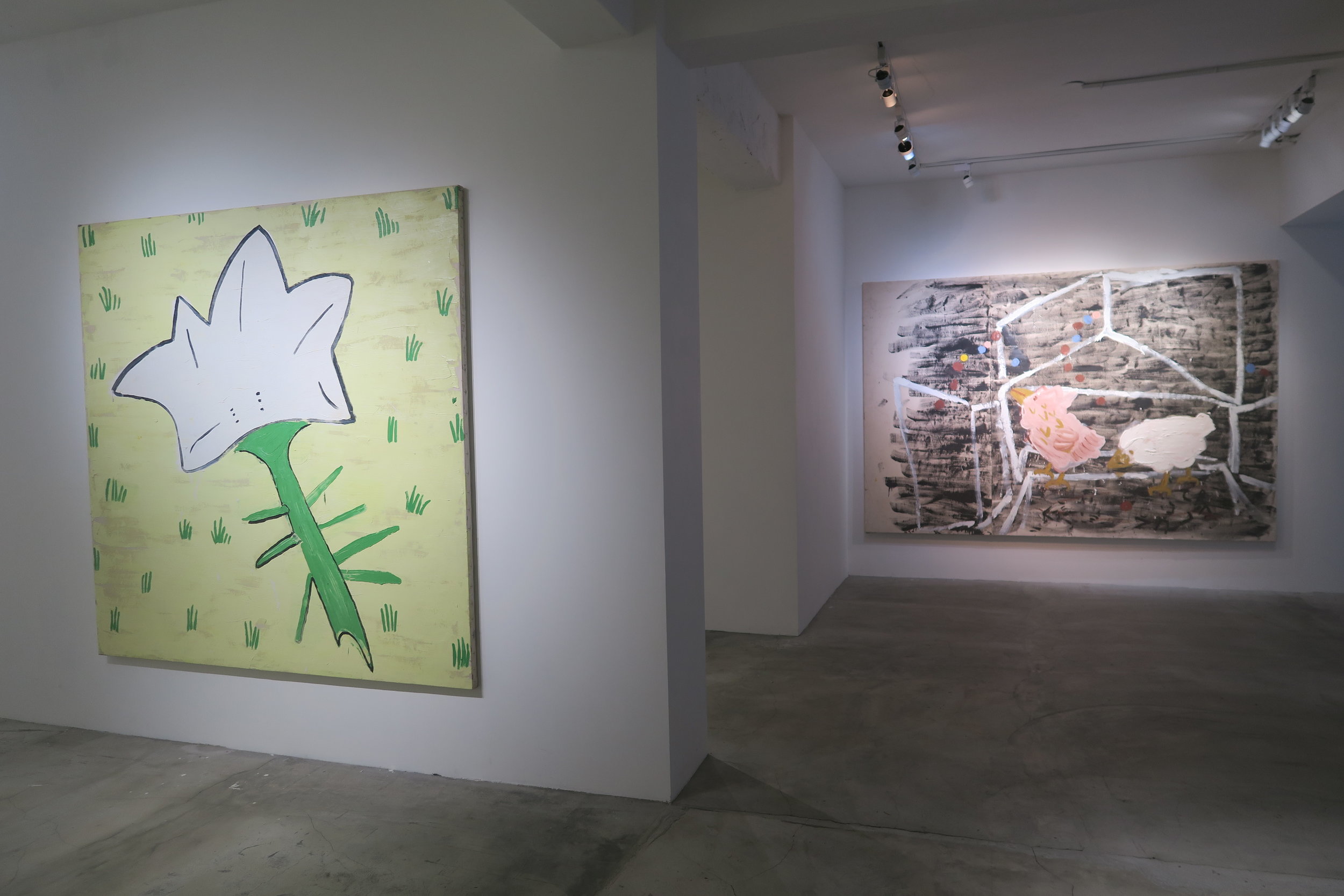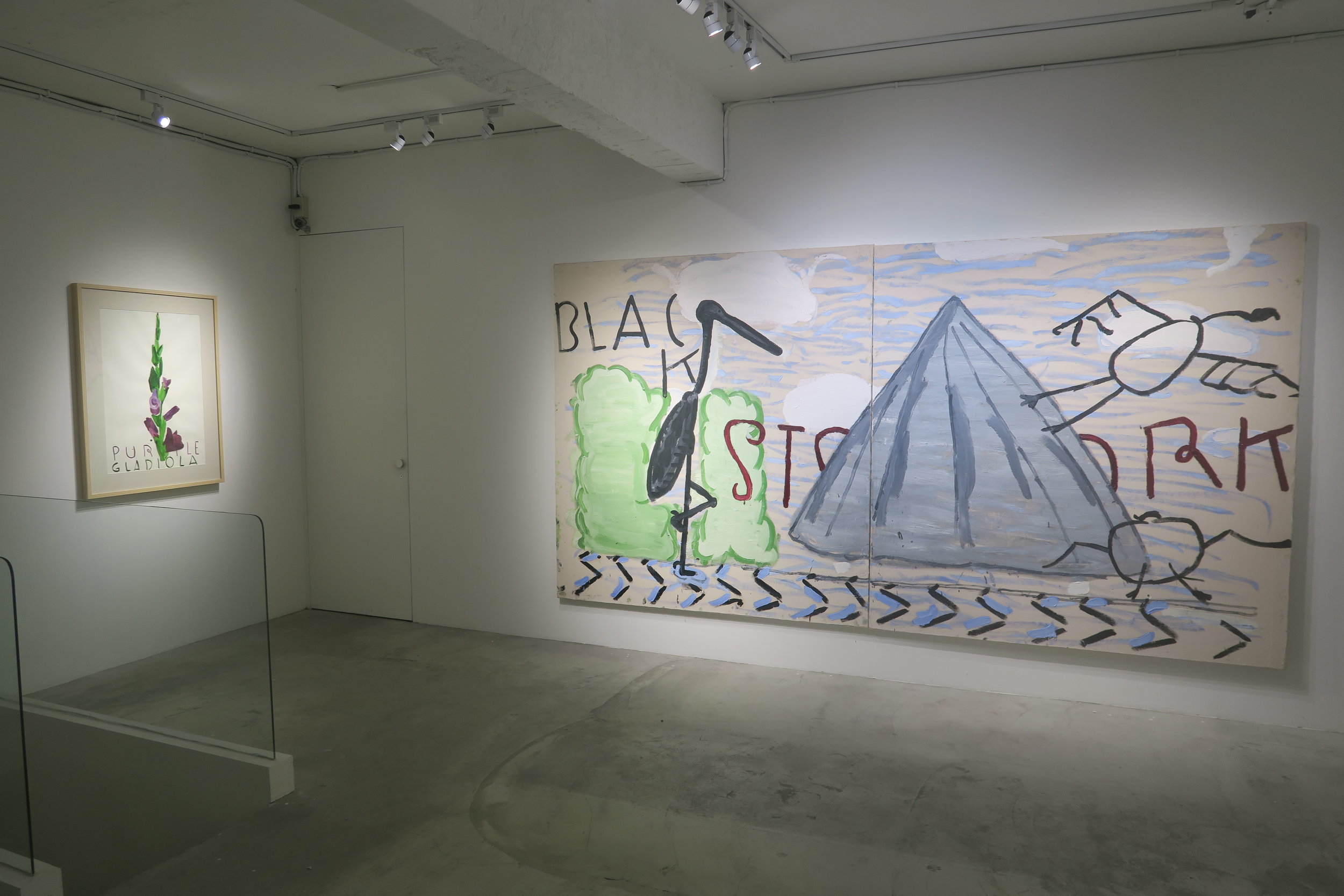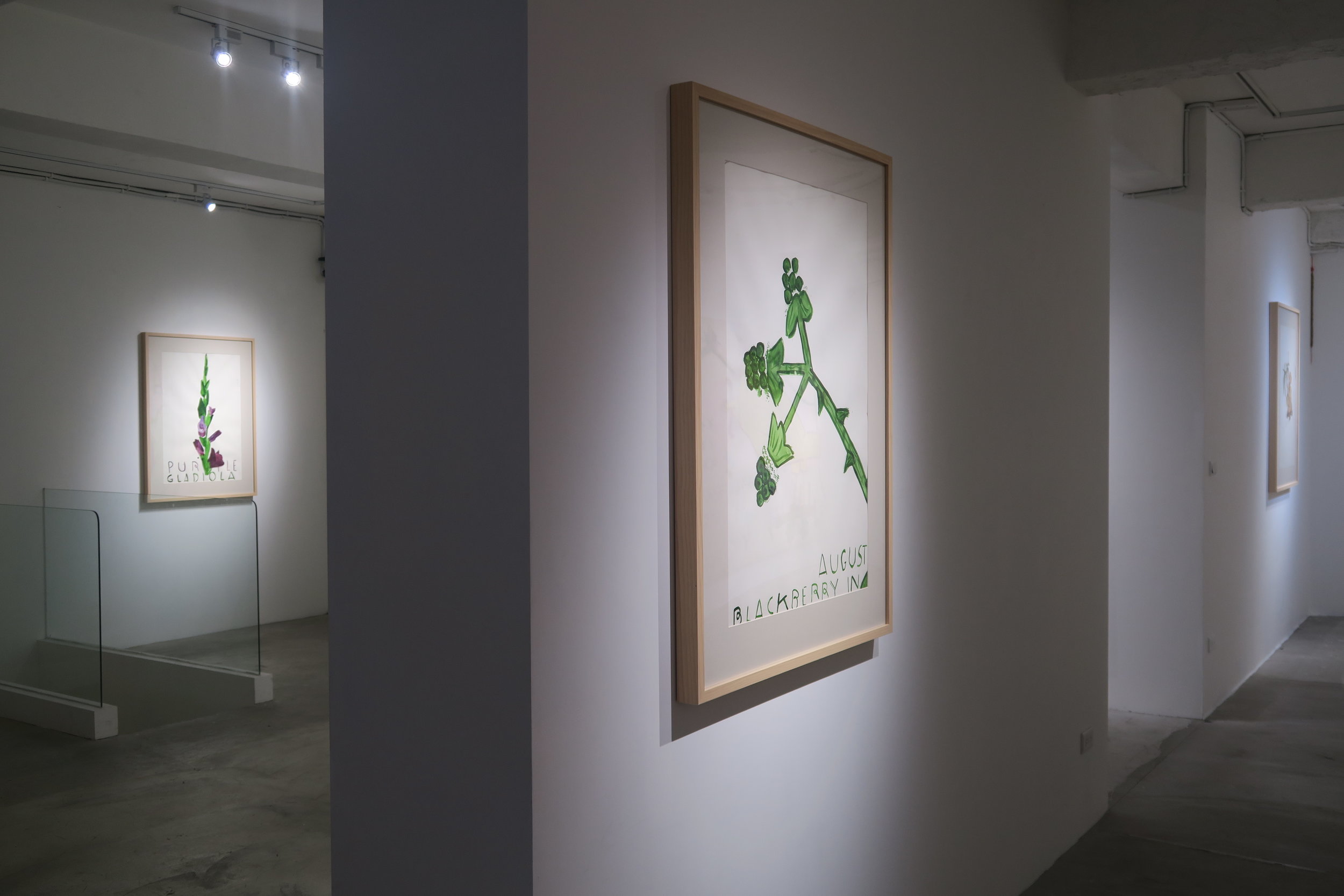Yellow Bird and Leaves: Rose Wylie Solo Exhibition




Author / Ting-Yi Chu
Assistant professor, Department of visual communi- cation, Asia University, Taiwan
Aged 81, Rose Wylie is an artistic and lovely granny artist. In her youth, she sacrifided her artist career to support that of her husband's and to look after her children. Yet, even after her children had grown up, she still could not forget the joy of making art.
In the early 1980s, Wylie enrolled at the Royal College of Art in London to study fine art. After which she had been laying low in the suburbs of London, until the art world finally discovered her in 2006, making her “the oldest emerging artist.”At first sight of Wylie’s work, one might wonder why they look so naive, like the works of a child or an amateur, even though she graduated from a top academy? These works won Wylie the John Moores Painting Prize and Wollaston Award, (both of the same standing as the Turner Prize), who was also elected Senior Royal Academician by the RA (Royal Academy of Art) in 2015. In 2013, she had a solo exhibition at Tate Britain, and in 2015, she showed at the Venus Biennale among many major international exhibitions. How are these awards justified? What has earned her all this praise?
Wylie’s paintings have many facets. At first glance, the scribbled lines and rough images resemble random doodles, yet it mirrors the intuitive, untamed inner power of Wylie. The compositions are not based on reasonable perspectives. She places tiny human figures right in the middle of the canvas, or boldly blowes them up to fill the canvas using extreme simplification and very little detail. Yet, if we take a closer look into Wylie’s work, it is not too hard to detect her masterful control and exquisitely planned composition and colour schemes. For example, in“Yellow Bird,” one of the paintings in this exhbition, Wylie use black to start with, but then tried white, grey, and pink, before finally arriving at yellow, and being satisfied. While it might look simple and childlike, it is actually Wylie’s rebelion against “fine art” aesthetics. She aims to uncover the "alternative gaze" through this visual vitality and rich rhythmic character of her art.
We must realise how hard it is, for someone like Wylie, who has received traditional academic training, to abandon the skills she had acquired through such an education, resolutely turning her back on the academic ways in a decided pursuit of pureness. Therefore, Wylie’s paintings always challenge classic definitions of beauty. There are no boundaries to her art,
making her paintings really stand out from the crowds of mass-produced contemporary art. The whole world is excited by her “ignoring” of tradition, and her “letting go” of the burden.
Being romantic, fun, and active, Wylie is not a spiritless 81 years old woman. There is no great discussion in her paintings. The main subjects of her work might be her beloved back yard, an impressive movie, a pop song in her memory, or even an actress picture posted on gossip magazine. Her tips of creating is pretty simple as well, she picks up visual elements which pile up the daily life, transfers these material into inspiration by making them into drafts. When Wylie is working on a giant painting, normally would be changed accordingly to her feeling or some other reasons at that moment. She might even insert the original drafts and the work’s title onto the image, just to increase the randomness of rebuilt and collage. The language of contemporary art might now be gallant and affected, but through Wylie’s distinctive imagery language and her wisdom, it has been either purified or transferred into a very simple, essential thing. Wylie’s creation is undoubtedly a different creature among the current art field, it is the utopia in her spiritual world. With her unrefined brushwork and the revealing of human’s real sensation, Wylie’s works are surely fresh and intrigues without the preachment and any pretense.
Among the emerging OWAs(Old Women Artists) trend, Wylie’s paintings are attracting a lot of attention still. These female artists were born in the early 20th century. Under the restriction of the modernism and male authority, their rights of being an female artist and their thoughts about their own aesthetics had been constrained. In 21st century, the OWAs has finally been rediscovered and understood. Their works are being reviewed by defining the main stream or the edge, and by the rule or the value. In the debate of order and disorder, the great historical discourse has no longer exist. The stories from the daily life of the housewives, surprisingly, making art a simple and intuitive experience.
